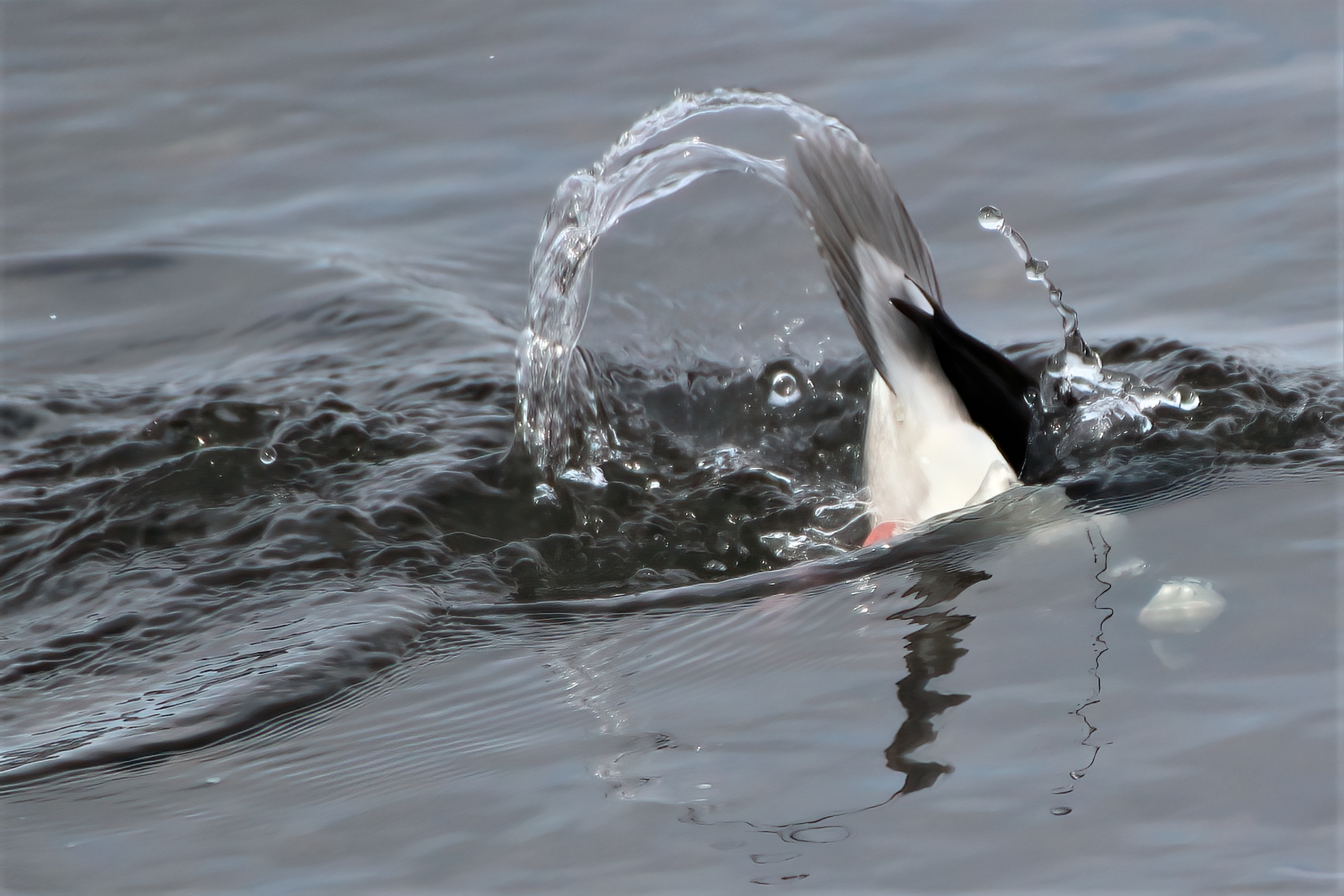Anyone who has been outdoors taking pictures of birds and wary wildfowl invariably knows that there will be numerous photos end up in the recycle bin. Giving thought as to why bird photographers have a penchant for accumulating the “rear end” of the bird business in many pictures is worthy of analysis.
Three situations come to mind when we are about certain to view the butt end. Kinglets, chickadees, sparrows and warblers are to put it mildly, hyperactive. Often they are targeting minute insect life, necessitating rapid movements to detect and then consume larvae, corpses and live meals. All of these species move furtively behind and under leaves, flit quickly to the next branch, and quite frankly, don’t have any concern for the frantic photographer who is beside, below, but seldom above the intended subject. Some species of warblers make a life long commitment to living in the highest of branches in aspen trees, ensuring we only see the butt end of a bird hard at work. In Carburn Park, Calgary we were looking well up into such a tree, hoping to spot the source of a birdsong. A gentleman came by and asked what we were looking for. “A chiropractor”, I replied.
A second circumstance that often results in multiple butt shots is our ground level, slow walking approach to wildfowl or waterbirds. Ducks, grebes, herons and cormorants seem to almost always be well aware of our presence, long before we get to our best location for pictures. Ducks and grebes, depending on the their level of fear, swim out further into a slough. Cormorants are incredibly wary waterbirds. It seems that merely the sight of human beings, results in a dive underwater to change locations in a slough, lake or canal. That failing, it is a panicked take off from the water.
The third situation that creates the wonderful opportunity to get a “cheeky” bird photo if we haven’t fainted or jumped out of our skin is the heart-stopping leap of partridge, grouse or pheasants that have been on “stealth mode”, hiding in the tall grasslands. Gray partridge and pheasants wait until the last second to flush out, becoming airborne in a hurry and flurry. Tthe least worried grouse is the spruce grouse, while ruffies and sharptails move quickly with the “sharpies” flying up to a mile before landing.
Why take such a photo? We have learned that our opportunity with a specific bird may indeed be the only chance to get a quality picture. Digital cameras allow multiple shots. In the “crossfire”, cheeky results are the extras. Perhaps Elaine’s philosophy worded, “the birds will come to you”, provides a sage guideline. Sit, wait quietly and wear camo clothing, is her recipe for success. I like “Zen” bird photography. If a bird is meant to be photographed, it will land, put itself in the ideal pose in the right sunlit position and wait. Whole birds, no butts is the key.
The Butt End of Birding

In response to Canada's Online News Act and Meta (Facebook and Instagram) removing access to Canada's local news from their platforms, Anchor Media Inc encourages you to get your news directly from your trusted source by bookmarking this site and downloading the Rogue Radio App. Send your news tips, story ideas, pictures, and videos to info@anchormedia.ca.




